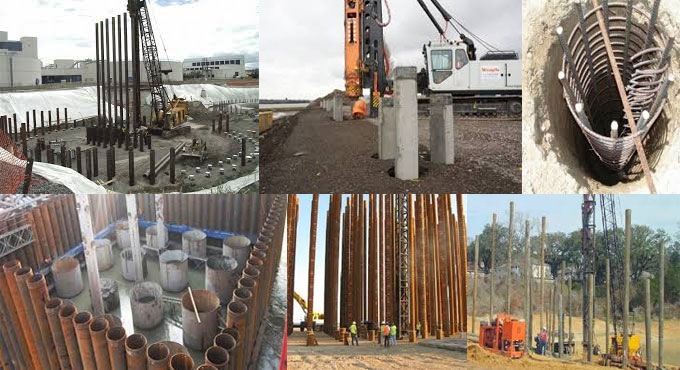
Some useful tips to choose perfect type of pile
Pile foundation is essential in case the bearing strength of soil is inadequate for the structure to resist. The pile foundation is mainly utilized to transmit and allocate load from superstructure via a material & weak, compressible strata or water stratum having insufficient bearing, sliding or uplift capability onto stronger, more condensed, less flexible and firmer soil or rock at depth water that has the capability to withstand the horizontal load devoid of detrimental displacement as well as raise the effective size of a foundation. A wide array of pile types can be used with different types of soils and structural needs.
A pile foundation comprised of two components like pile cap and single or group of piles. Piles transmit the loads from structures to the strong strata, rocks or soil with extreme bearing strength. These belong to long and slender members whose length can be over 15m.
Given below, the details of common file types and their characteristics :-
(1) STEEL H-PILES: Steel H-piles offer high axial working strength that surpass 400 kips. They come in different types of sizes and lengths and can be managed easily, attached, and cut off. H-piles replace little soil and are fairly easy to drive. They can clean hindrances efficiently as compared to other piles, with little damage to the pile from the hindrance or from hard driving. But the drawbacks associated with steel H-piles are the elevated material costs for steel and probable long delivery time for mill orders.
Besides, excessive corrosion may also occur in steel H-piles in specific environments. So, precautions should be taken. Pile shoes are essential while driving in dense sand strata, gravel strata, cobble-boulder zones, as well as driving piles to refusal on a hard layer of bedrock.
(2) STEEL PIPE PILES: Steel pipe piles may be determined open- or closed end and may be stuffed with concrete or remain unfilled. The pipe piles packed with concrete may offer very high load capacity, in excess of 1,000 kips in some cases.
Setting up pipe piles is more complicated as compared to H-piles as closed-end piles replace more soil, and open-ended pipe piles may develop a soil plug at the bottom and function similar to a closed-end pile. Handling, splicing, and cutting are easy. Pipe piles have lots of drawbacks like elevated steel costs, long delivery time, and possible corrosion issues).
(3) PRECAST CONCRETE PILES: Precast concrete piles are generally pre-stressed to resist driving and handling stresses. Axial load capacity may go upto 500 kips or more. They contain high load capacity when there are friction piles in sand or where tip bearing on soil is crucial. Concrete piles normally last long and have good resistance capacity against erosion.
They are frequently utilized where the pile is expanded over the ground. The precast concrete piles are not recommended in some salt water applications as durability may be affected. It is more complicated to deal with long piles and drive precast concrete piles are with regards to steel piles. For pre-stressed piles, If the necessary length can?t be recognized perfectly, cutting & splicing becomes very difficult when required to transmit tensile and lateral forces from the pile head to the base slab.
(4) CAST-IN-PLACE CONCRETE PILES: Cast-in-place concrete piles belong to shafts of concrete cast in thin shell pipes, top driven in the soil, and generally contain closed end. Such piles can offer up to a 200-kip capacity. With precast piles, it is possible to modify lengths easily by cutting or splicing the shell. The material cost of cast-in-place piles is comparatively less. They are not recommended while driving through hard soils or rock.
(5) MANDREL-DRIVEN PILES: Mandrel-driven piles belong to slim steel shells which are provided in the ground through a mandrel and then stuffed with concrete. Such piles can offer up to a 200-kip strength. The major issues associated with mandrel-driven piles are that patented, franchised systems are essential for installation and installation is very complicated as compared to steel or precast concrete piles. The cost of steel is lesser for this type of pile due to utilization of thinner material. The heavy mandrel has high capacity.
It becomes very tough to raise mandrel-driven piles in length as the maximum pile length driven is restricted with the length of the mandrel available at the site. Contractors may claim additional costs if essential to bring a longer mandrel to the site.
(6) TIMBER PILES: Timber piles are comparatively economical, short, low capacity piles. Long Douglas Fir piles are accessible but they are very costly. They are useful in some applications like specific types of corrosive groundwater. Loads are normally restricted to 70 kips. The piles can be managed very easily. Untreated timber piles are extremely prone to decay, insects, and borers in specific environments. They are easily spoiled throughout hard driving and are difficult to splice.
To get more information, civilblog.org


